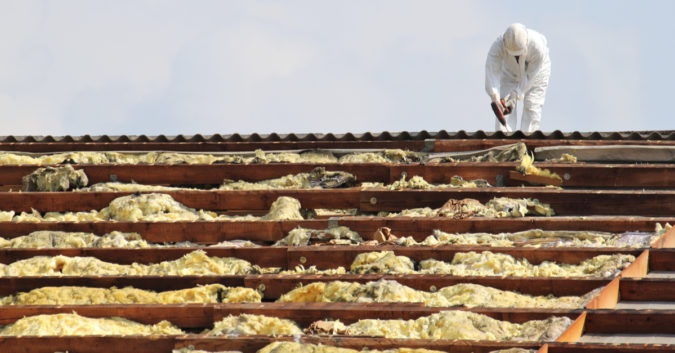In Detroit, the emergency demolition of houses that contain asbestos has presented researchers with an unusual opportunity for study.
Normally, before renovating or tearing down a building, federal law requires asbestos abatement in order to keep future occupants and the surrounding community safe. Asbestos abatement is the process of safely removing all of the toxic substance from the structure so that it is not released into the air.
Once airborne, tiny asbestos fibers can be inhaled into the lungs. There is no safe level of asbestos exposure, according to the World Health Organization (WHO), which can lead to mesothelioma, asbestosis, and asbestos-related lung cancer.
When a building is deemed unsafe for workers to enter, however, asbestos abatement cannot safely take place, and the building must be razed. This is known as an emergency demolition.
Detroit has become notorious for its “urban blight,” with roughly 67,000 dwellings unoccupied and falling apart. Many of these structures are so far gone that it is simply too dangerous for workers to go inside and remove the asbestos before demolition.
So, what happens to the asbestos in blighted homes when they are knocked down without abatement?
Study Focuses on Asbestos Released During Emergency Demolitions
Since 2014, some 18,000 structures in Detroit have been torn down in the hopes of rebuilding and revitalizing the city. In approximately 10% of these cases, the buildings were deemed unsafe for workers to enter and remove the asbestos.
Researchers from the University of Michigan wanted to see how much asbestos was released during these emergency demolitions. After studying air samples from 25 such demolitions, they found that emissions of airborne asbestos were virtually non-existent.
Study author Rick Neitzel, associate professor of environmental health sciences at the University of Michigan School of Public Health, said that:
“This is evidence that we can’t just assume that asbestos is going to be released when a home is demolished and it suggests that we really probably ought to do a follow-up larger study so we can decide whether this EPA regulation that the asbestos be removed needs to be reconsidered.”
Of the 25 homes analyzed, only 2 asbestos fibers were captured during the emissions collection. “Otherwise there was no measurable asbestos in the air,” said Neitzel, “That, I think, is the meat of this story.”
The Cost of Asbestos Abatement and the Price of Public Health
Looking at the results of their study, Neitzel and his colleague Alfred Franzblau, a professor of environmental health sciences, stepped back to consider the cost of asbestos abatement within the broader picture of Detroit’s health as a city.
“Asbestos is linked to a number of adverse health outcomes,” said Franzblau, “so, on first blush it would appear to make sense to require asbestos inspection and abatement of abandoned residential dwellings prior to demolition.”
The policies make sense, but are they protecting people? Results from the study suggest that the added costs of asbestos abatement have a negligible public health impact.
The University of Michigan researchers worry that the cost of asbestos abatement is slowing down Detroit’s ability to get rid of blighted homes, which present public health problems of their own.
“Abandoned dwellings are clearly linked to a variety of serious adverse health outcomes,” said Franzblau, “so anything that delays or prevents demolition of abandoned homes, such as by making them more costly, will likely have adverse effects on the public’s health.”
Since the study found little benefit of slowing down demolition for abatement, the potential risks of asbestos exposure “are far outweighed by the benefits associated with demolishing them,” Franzblau said.
There Is No Easy Fix for Asbestos
Although the result is certainly good news from a public health perspective, Neitzel cautioned that his team’s results, “may or may not be broadly generalizable, since this is really the first study that’s been done of residential demolitions, trying to see if asbestos is emitted.”
In Detroit, more than 90% of the housing stock was built before 1978, when asbestos was still widely used in construction. More homes need to be studied to ensure that the lack of asbestos emissions is indeed typical. Additionally, many larger structures in the city still have asbestos issues, such as automotive assembly plants and the Wayne County Jails.
The study’s findings provide a pathway for potentially quicker, less-costly asbestos removal, but more research is needed before policymakers reconsider the U.S. Environmental Protection Agency’s asbestos laws and regulations.
The threat of asbestos exposure is life-long. If there is a scientifically sound way to speed up the process of removing blighted structures laden with asbestos, it should be pursued, but caution should not be thrown to the wind.
